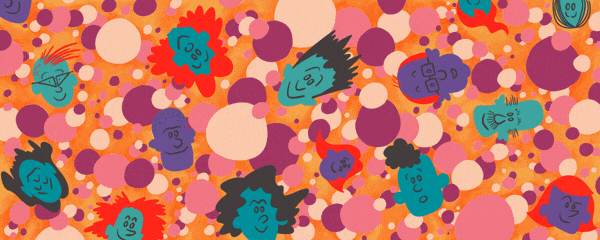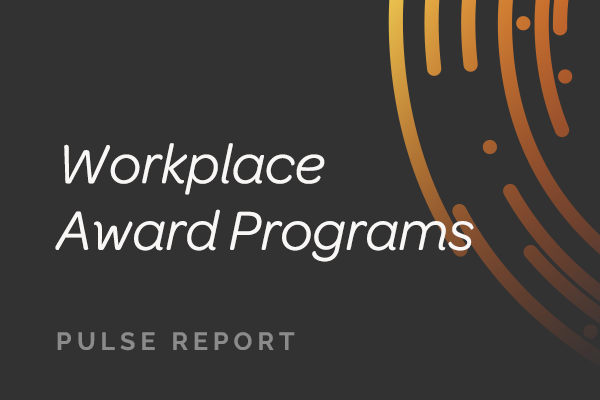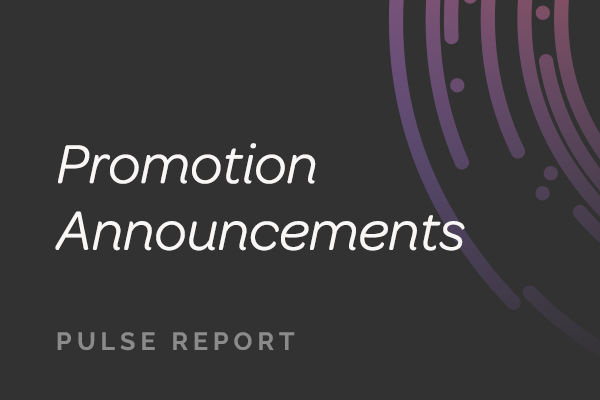
The most iconic image of workplace creativity is a group of people coming together at a particular moment in time to generate ideas around a specific topic: the brainstorm. While increasingly sophisticated digital tools — and a global pandemic — have expanded this portrait to include virtual contributors across geographies alongside folks sitting around a conference table, the basic principle remains the same.
If you’ve ever participated in a hybrid brainstorm, you know how uncomfortable it can be. The asymmetry between live and virtual participants can widen the gap between different creative approaches and leave teams spinning their wheels.
Fortunately, there are other ways to drive effective creative results in our ever-evolving workplace. As I argued in an earlier blog post, fostering workplace creativity in our changing work environment requires greater inclusivity and a higher tolerance for productive failure. Here are a few tactics to help move away from traditional brainstorms into new models that better suit a wider range of creative approaches.
Experiment with new formats
Today, there are dozens of tools on the market to help teams coordinate creatively in a virtual work environment, from general collaboration tools to much more targeted options specifically for brainstorming. Each comes with its own benefits and drawbacks, but researching and trialing a few promising examples is a great place to start.
You can employ one or more of these tools to engage in what Scientific American calls asynchronous virtual brainstorming. By removing the notion of a single time and place for sharing ideas, this multi-step process breaks open the brainstorm by establishing discrete digital touchpoints spread out over days or weeks, allowing participants to engage on their own time in their own way.
In addition to creating a forum for ideas that might pop up outside the bounds of a group meeting, an asynchronous approach can take pressure off participants by separating the stages of idea generation and evaluation, while still offering everyone a role in both. There are even options available that allow you to collect responses anonymously, which can prompt contributions that might not otherwise see the light of day and work to eliminate biases.
A few other options to consider:
- You can employ online collaboration tools to explore a more open-ended approach. Inviting teams to a dedicated creative Workplace group, Slack channel, or Google doc can create quick-turn opportunities to post and respond to creative prompts on the spur of the moment.
- When groups of employees do convene in person, especially if it’s not a regular occurrence, take advantage by getting them out of the conference room. New surroundings — like a funky café, a stimulating retail space, an outdoor walk, or a museum or other cultural site — have a unique ability to break people out of siloed thinking.
- If you’re committed to a real-time virtual brainstorm, shake things up by encouraging everyone to join with a new background chosen based on the theme or topic of the conversation. Better yet, encourage everyone to keep their cameras off. The freedom to step away from the screen and doodle, fidget, or simply sit back and listen without the distraction of prying eyes, can aid in the flow of ideas by reducing self-consciousness and helping people focus in their own unique ways.
Leverage new and existing relationships
Paradoxically, workplace creativity can be fueled by both familiarity and novelty. People with long professional histories together can understand each other’s shorthand and leap in new directions with enviable ease. On the other hand, partnering with people you’ve never worked with before has the advantage of blowing through familiarity bias and uncovering novel possibilities.
Some approaches to consider include:
- Pair up contributors for targeted two-person brainstorming conversations. Lean into preexisting relationships with proven chemistry, or experiment with assigning new partnerships across teams or geographies to give people a chance to make new connections.
- Alternatively, use virtual breakout rooms to create small groups picked at random, or even real-time one-on-one “speed-dating” rounds that provide the opportunity to bounce ideas off a succession of partners, new and old.
- Create a venue for employees to talk about the books, articles, movies, TV shows, or music they’ve been absorbing. While such conversations can help create or reinforce interpersonal connections, you can take it a step further and challenge them to work out ways to connect what they’ve been reading or watching to creative problems that need to be solved, and mine their answers for unexpected insights.
Make it a practice
To make workplace creativity flourish, you can’t isolate it to an hour or two every few weeks. It works best when you make it a regular part of your routine, especially among those who don’t normally view themselves as “creative.” Here are a few possibilities:
- Encourage teammates to set aside a short period of time each day — as little as 15 minutes — to muse quietly about an existing creative question. Even in the absence of a specific prompt, using this time for journaling or stream-of-consciousness writing can help ideas flow, especially at the beginning of the day before emails and meetings take over.
- Encouraging knowledge-sharing among your teams is a great way of opening their eyes to different perspectives. During weekly team meetings, or on your online collaboration platforms, assign individuals to provide an explainer about an aspect of their job or personal interests that others might not be aware of. The existing knowledge and talent of your teammates has the potential to spark new and unexpected connections.
- Set up a recurring series of “creative office hours,” during which an entire team or organization is invited to connect virtually for an open-ended series of conversations about creative issues. Encourage participants to bring whatever problems or questions are on their mind and assign a facilitator to guide a freewheeling discussion among whomever can help at any given time. Sending along some quick notes afterwards about what was discussed can help keep the conversation going with anyone who was unable to attend.
We’re still getting used to working flexibly at different hours and from different locations, and we can all benefit from bringing more flexibility to our creative thinking. Taken individually or in combination, these ideas can be adapted and customized to better fit your own company or team culture. Do whatever you need to break free from the common brainstorm!
More from our series on creativity:
Contributors
Jeff Lewonczyk
Director, Specialist
Jeff is a strategist and award-winning illustrator with a background in theater, music and arts advocacy. A resident of Brooklyn, he directs musical comedies and helps clients connect with their audiences through visually compelling stories and messaging.






